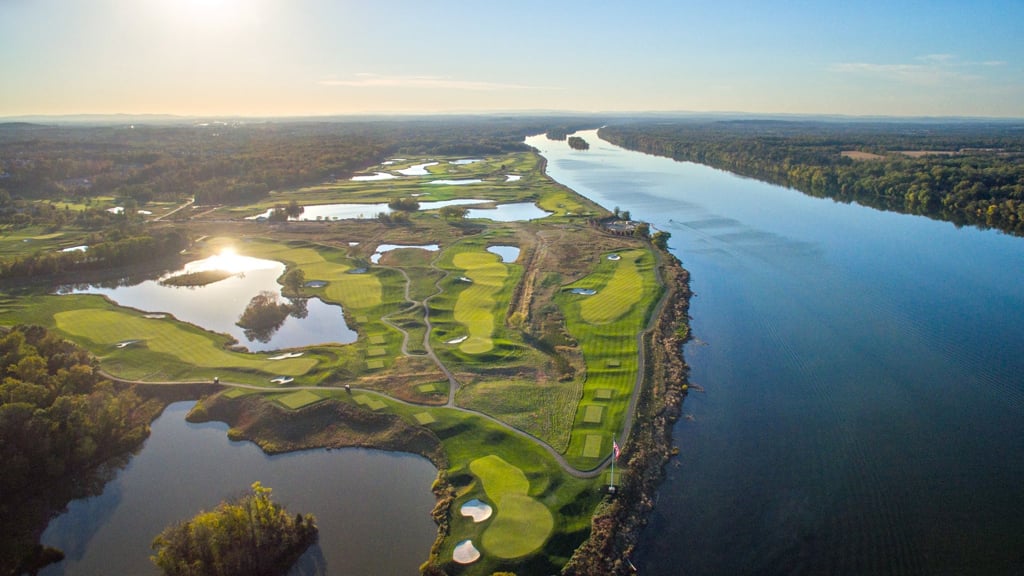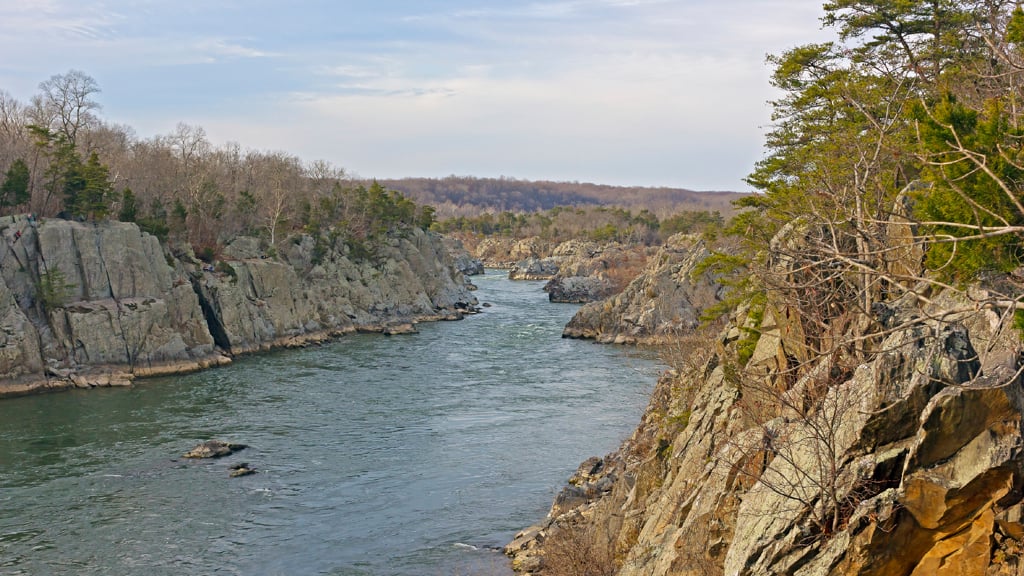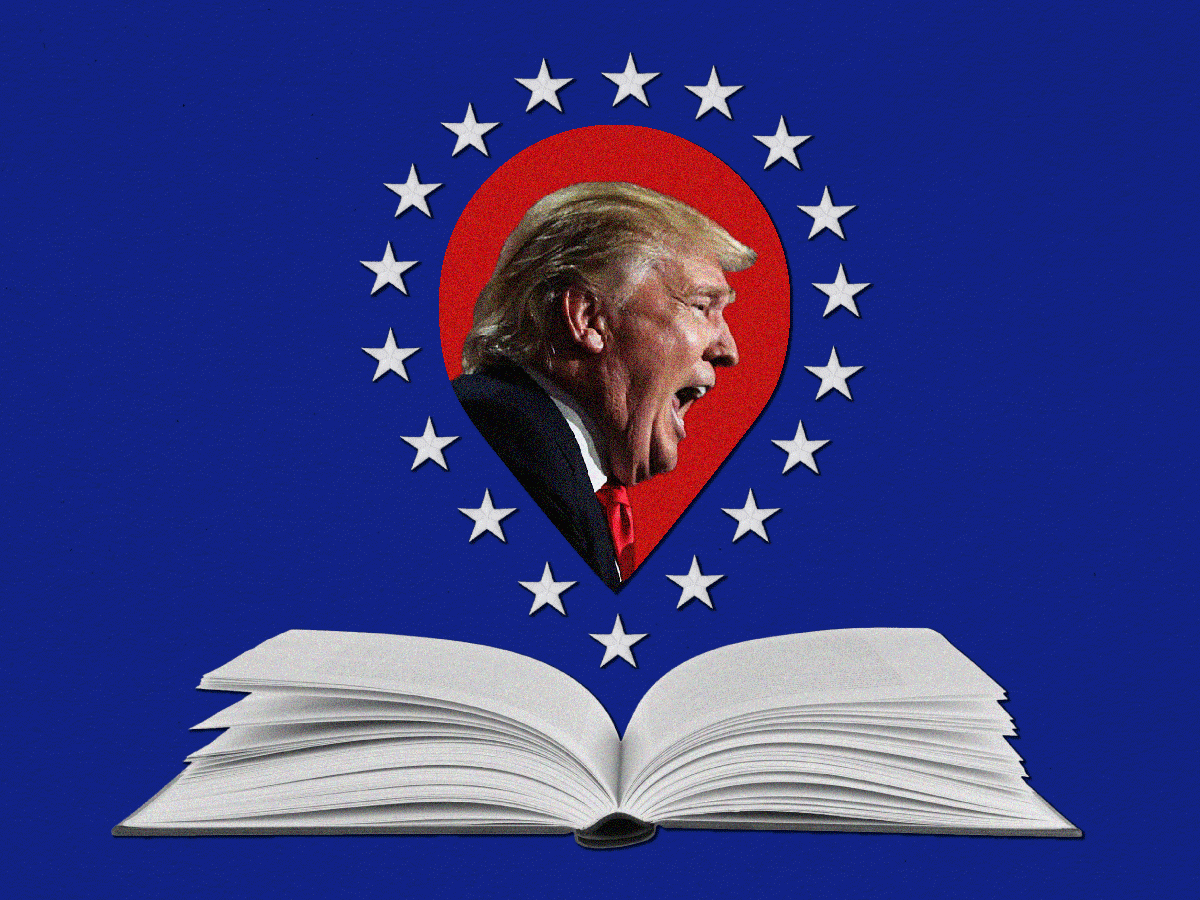The Trump National Golf Course in Sterling offers majestic, unimpeded views of the Potomac River. It is also a significant contributor of polluted runoff water and other damaging agents into Washington’s water supply, according to advocates for cleaning up the river.
The charge comes from Hedrick Belin, the president of the Potomac Conservancy, which is issuing its annual State of the Nation’s River report Wednesday. Overall, the Potomac’s health is improving at pace that, if it holds up, will make the river swimmable and fishable by 2025. Levels of three leading pollutants—nitrogen, phosphorous, and sediment—are declining, fishing and boating is increasing; and populations of shad, perch, and other native fish species are rebounding.
“Based on the data the river’s health is the best we’ve seen in decades,” Belin says. “It’s reflective that we’ve come pretty far. The Potomac’s not fully out of danger. The programs getting results continue to be funded and expanded elsewhere.”
Phosphorous, which decreases water quality and increases the population of potentially toxic algae, jumped from a “D” on the Conservancy’s previous report card, to an “A.” The US Geological Survey measured 3.58 million pounds of phosphorous in the Potomac in 2014, more than 10 percent better than an Environmental Protection Agency goal of 3.9 million pounds by 2025. The Conservancy credits 2010 laws in Maryland and Virginia banning the sale of detergents that contain phosphates and restrictions on the use of phosphorus in fertilizers.
Belin gives credit for the long-term gains to big infrastructure projects like DC Water’s Blue Plains Treatment Plant, one of the world’s largest wastewater facilities that processes 370 million gallons of sewage every day that flows in from across the region. “That’s a 40-year investment,” he says.
The report card also attributes some of the improvement to an increase in the amount of protected land around the Potomac from 1.8 million acres in 2011 to 1.9 million in 2013, or about 26.6 percent of the land in the watershed.
There are still problem areas. Even with the rebound of common fish species like shad and striped bass, the Potomac continues to see more invasive species like blue catfish and snakeheads. The population of northern snakehead, a predatory species native to China that can survive in low-oxygen environments and mud puddles, has reached 20,000, almost equal to the largemouth bass population. Blue catfish, which can live 30 years, grow to 100 pounds, and obliterate native mussel populations, are also thriving. The Potomac Conservancy recommends more anglers target the species—”blue catfish make for great table fare,” the report reads—but concedes it is probably too late to eradicate them.
But land use continues to be the biggest issue, which brings in Donald Trump. While agriculture remains the single largest contributor of pollution into the Potomac, the river’s health is also being held back by more deforestation. And in the 55 miles between Harper’s Ferry and the American Legion Bridge, there isn’t a single stretch of tree-free frontage on either side of the Potomac larger than Trump National, Belin says.
Trump bought the former Lowes Island Club in Sterling in 2009. In an expansion of the renamed club the following year, the Trump Organization removed about 465 mature trees—including American elms, green ashes, and black locusts—along the water, exposing 1.5 miles of shoreline. Without the trees, and their extensive root systems, acting as a buffer, the Potomac stands to receive much more runoff from farms and other nearby land, while the land around it suffers more topsoil erosion.
“Trees are really nature’s Brita filters,” Belin says. “Trump National flies in the face of what many developers are doing in terms of building in river-smart ways.”

The Trump Organization, which cut down the trees unilaterally but acted within Loudoun County law at the time, says the Potomac is better off without the trees.
“The preexisting conditions were a very erodible situation,” says Ed Russo, Trump’s environmental expert. “Every time it rained or flooded this was a perfect delivery system for pollutants into the Potomac.”
Russo tells Washingtonian the grasses the Trump golf course planted in place of the trees are an improvement.
“Not only do they stabilize the soil, it’s a fantastic habitat for grassland birds and shore birds,” he says. “The trees along the Potomac were not environmentally sound or sustainable.”
While some of the trees Trump National removed were unhealthy, the overall volume of chopping alarmed Loudoun officials at the time. “I don’t believe we felt that the extent of the removal was necessary,” a county official told the Washington Post in 2010. Last September, the Potomac Conservancy collected about 6,300 signatures on a petition urging Trump to donate 500 trees to Northern Virginia parks. To date, neither Trump or his company have responded.
But Sterling is not the only Trump golf course where Russo has made this kind of argument. Russo, who is based in Palm Beach, Florida, has also overseen contentious environmental projects at Trump’s golf courses in Bedminster, New Jersey, and Doral, Florida—with similar results. The Bedminster course was cited in 2011 by the New Jersey Department of Environmental Protection for disturbing wetlands after cutting down trees and shrubbery. Almost the opposite has happened in Florida. After Trump bought the Doral course in 2012, he set about barricading it from the neighbors’ views by planting soaring palm trees, many of which have since been chopped down mysteriously; Trump is now suing several people who live near the course.
Consistent with the rest of his brand, Trump’s golf courses are larded up with luxury features. Since he took ownership of the Sterling property, Trump has also added a $10 million tennis facility, restaurants, and a remodeled and expanded clubhouse. Membership costs about $100,000 to join, plus monthly fees of $698. It also hosts a robust wedding business.
Russo also speaks with the same kind of bluster as his boss. “I have given this interview at least six times,” he says. “Not one of them was fair. This is a spectacular environmental net gain we did. Nobody required Donald Trump to do it. He did it because it was the right thing to do. Everyone agrees with me except Hedrick what’s-his-name.”
But the measured benefits of tree growth favor Belin. A 5 percent increase in tree cover can mitigate stormwater runoff by 2 percent according to American Forests, a national conservation organization. A mature, healthy tree with a deep root system can also stave off erosion and prevent sediment from dribbling into a river that supplies the drinking water for 85 percent of the Washington area’s nearly 6.1 million residents.
“Clear-cutting a mile of trees along the shoreline,” as Trump National did, “flies in the face of using natural protections,” Belin says.




















